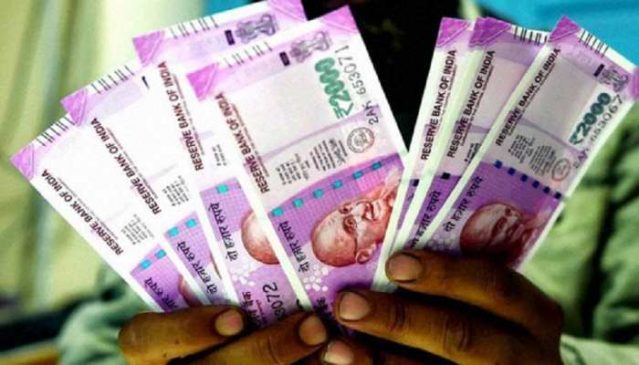The Rs 2000 notes constitute around 10.8 per cent of total currency in circulation or Rs 3.6 lakh crore.
The withdrawal of Rs 2000 currency note is likely to be a non-event but it will have a favourable bearing on liquidity, bank deposits and interest rates, a report by SBI said.
The SBI’s research report ’Ecowrap’ expects that almost the entire amount of Rs 3.6 lakh crore in the form of Rs 2000 will come back to the banking system (the report assumes 10-15 per cent of the total Rs 2000 notes are in currency chests).
“Even though the impact of Rs 2000 rupee note withdrawal is a non-event, there will be a favourable impact on liquidity, bank deposits and interest rates. Decoding exchange/deposit dynamics, we understand, banks will already be holding some of these notes in their currency chests, thus the impact on deposits will be limited,” it said.
The Rs 2000 notes constitute around 10.8 per cent of total currency in circulation or Rs 3.6 lakh crore. The notes can be exchanged or deposited till September 30, 2023.
The 131-day window to exchange junked 2000 rupee currency notes opened on Tuesday with a mixed bag of small queues and confusion at some banks over the requirement of officially valid identity cards like PAN or Aadhaar, and official forms.
Read More: How To Activate LIC WhatsApp Service Online Or Via Chat? Step By Step Process Explained Here
Unlike November 2016, when old 500 and 1000 rupee notes – constituting some 86 per cent of the currency in circulation – were banned overnight, resulting in sarpantine ques outside bank branches across the country, this time no crowding is being witnessed.
Meanwhile, Reserve Bank Governor Shaktikanta Das on Wednesday said that RBI is monitoring the situation regularly with regard to the withdrawal of Rs 2000 currency notes and expressed confidence that the entire exercise will be completed in a non-disruptive manner.
Ecowrap further said in digital payments, India has been witnessing new milestones, in both value and volume terms, which indicate the robustness of its payment ecosystem and acceptance by a wide stratum of consumers.
“If we look at the ’total digital payments’ per cent of nominal GDP, it has increased to 767 per cent in FY23 from 668 per cent in FY16,” it said.
Read More: India ‘banks’ on cash as ATMs Withdrawals rise 235% since demonetization
The retail digital payments (excluding RTGS) as per cent of GDP reached 242 per cent in FY23 from 129 per cent in FY16.
Among all, UPI has emerged as the most popular and preferred payment mode in India pioneering Person to Person (P2P) as well as Person to Merchant (P2M) transactions in India accounting for about 73 per cent of the total digital payments, the report said.
The volume of UPI transactions has increased multi-fold from 1.8 crore in FY17 to 8375 crore in FY23. The value of UPI transactions has also increased handsomely, from just Rs 6,947 crore to Rs 139 lakh crore during the same period, a jump of 2004 times.
The report further said currency in circulation has moderated to reach 12.4 per cent of GDP in FY23, almost same level as 2015-16.
(With PTI inputs)





































